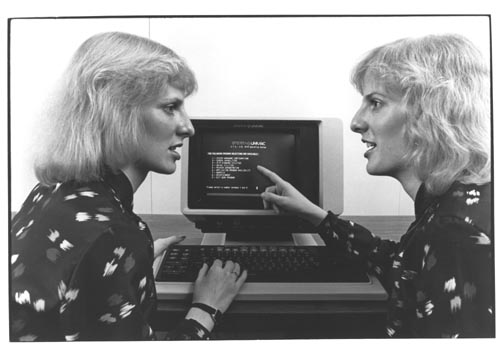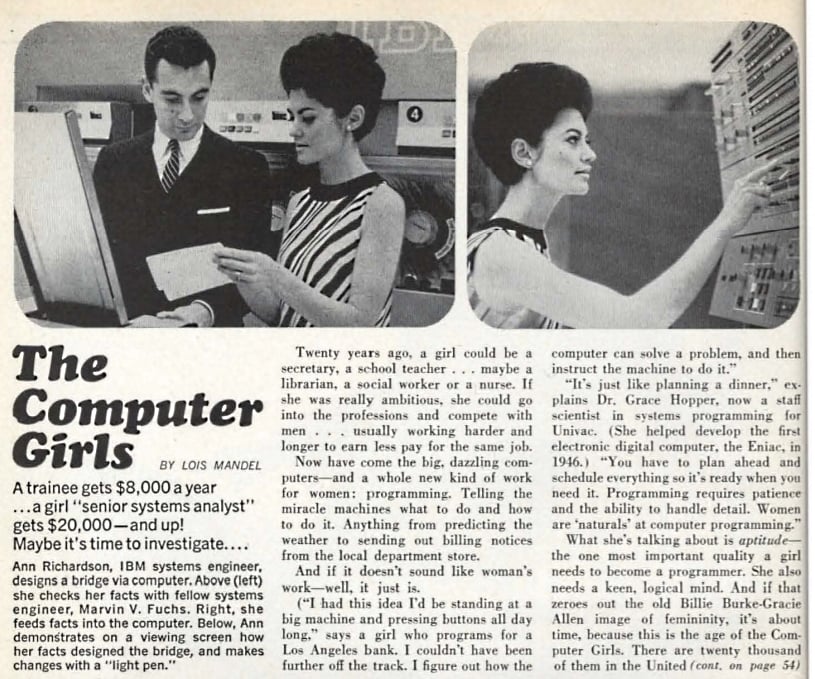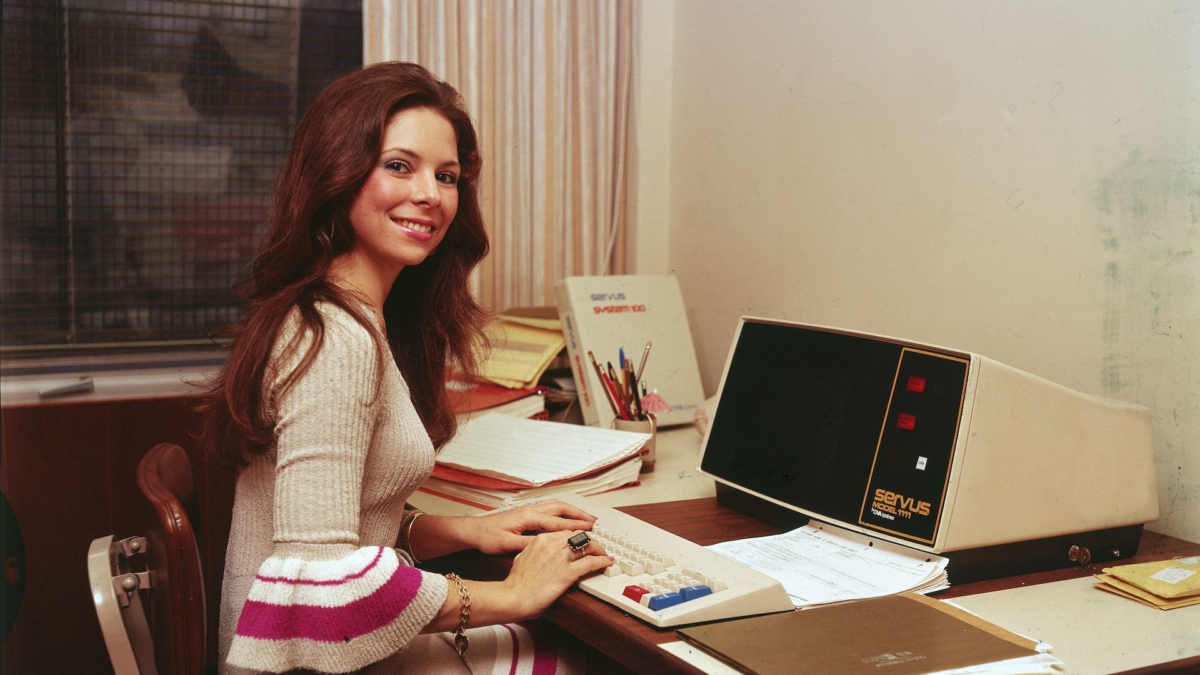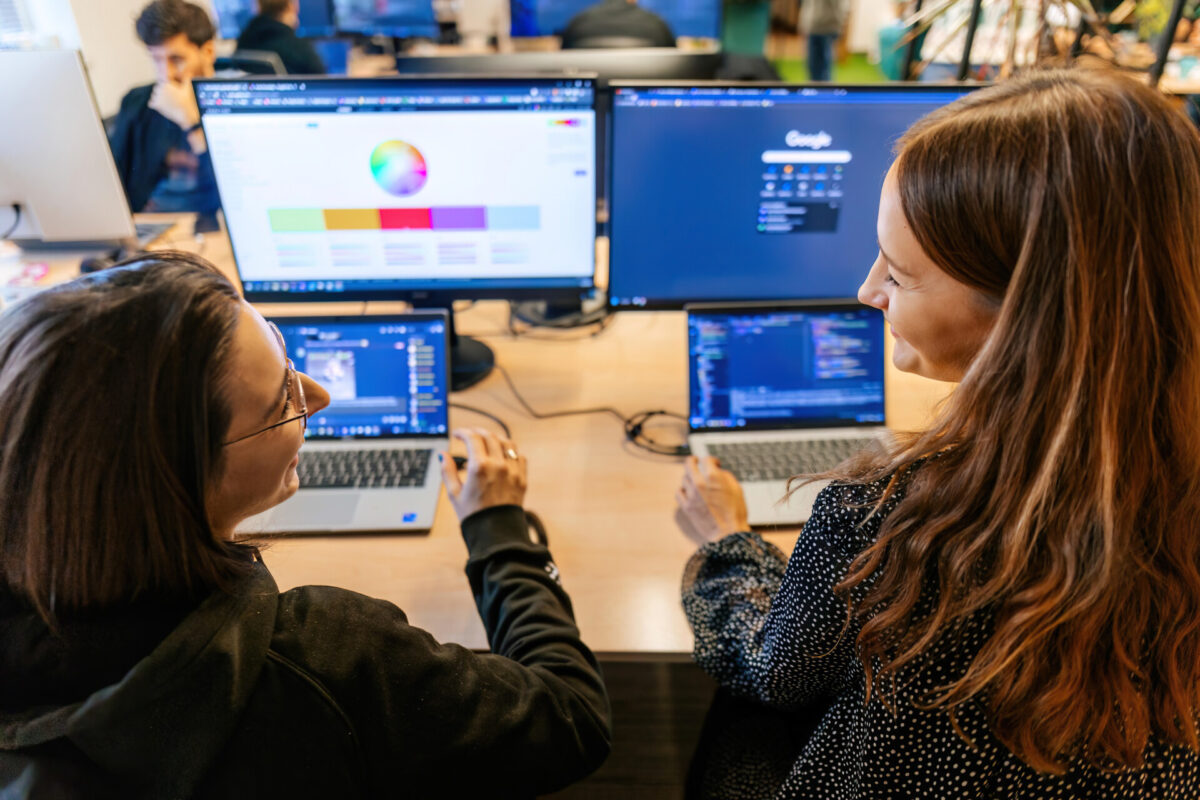

New technologies are associated with the gender gap, but IT has not always been male-dominated. It is a myth that tech history debunks.
Rapid trends have seen an increase in women working in the IT sector, indicating that the tech world is becoming more inclusive. This article will examine women’s challenges in IT and the recent progress toward creating a more diverse and equitable workplace.
Women used to dominate the tech industry
Did you know that programming was a feminized profession? Ada Lovelace designed the first algorithm intended to be executed by a computer-based system in 1833. During the 19th and early 20th centuries, women predominantly did coding.
Those were the early days of programming’s promise. Tech companies were just starting, and the workplace environment tended to be monotonous, repetitive, and time-consuming.
Diverse companies allowed women to start their careers because they were considered more engaged employees who could better focus on research. Furthermore, women may perform the same work as their male counterparts but do not receive equal pay.

Sperry Univac UTS 40 system, Blue Bell, PA, US (From the collection of the Computer History Museum, public domain)
Was there a clear distinction between men’s and women’s technology roles?
There was no sharp division. Gender diversity was evident in teams of engineers and programmers. Therefore, something that today we perceive as an innovation, an inclusion postulate written into an organization’s strategy, used to be natural and completely unintentional.
Women constructed computers and were involved in engineering. Many female mathematics graduates ended up in teams of programmers and designers. They formed a whole network and sat together for hours on the first algorithms and programming languages.
Programming, now considered prestigious, was once treated as more of a research or hobby.

Programmers Ruth Lichterman (left) and Marlyn Wescoff Meltzer (right) wiring the ENIAC with a new program. (From the collection of the ARL Technical Library, public domain)
The Computer Girls
Cosmopolitan published an article in 1967 about the growing number of job opportunities for women in computer programming.
Dr Grace Murray Hopper attempted to appeal to the magazine’s readership in the article by commenting on the profession: “It’s just like planning a dinner. . .You have to plan and schedule everything so it’s ready when you need it. Programming requires patience and the ability to handle detail. Women are ‘naturals’ at computer programming.”
This priceless snippet of Cosmo’s history highlights the enormous need for female computer programmers.

The first page of “The Computer Girls” article by Lois Mandel in the April 1967 issue of Cosmopolitan.
Creating a stereotype of a male programmer
The vast financial potential of the information technology sector is at the root of the gradual disappearance of women from tech. The media and popular culture perpetuated the stereotype of the male programmer as computing technology advanced.
As a result of men’s desire for higher wages and social standing, men began to swiftly form their perceptions of skilled programmers while downplaying the significance of women working in the tech industry.
Men also performed much better than women on aptitude and personality exams used in hiring. The educational structure at the time gave men who wished to work in tech fields the advantage. Marketers developed plans to target young males as personal computers became increasingly common in homes and taught women that computer entertainment was inappropriate for them. They usually saw computers in their brothers’ rooms.
Tech companies designed aptitude tests specifically for the stereotype of male employees
An infamous place in the history of technology belongs to the aptitude test for the computer profession, created by William Cannon and Dallis Perry. As many as two-thirds of companies hiring tech workforce, including corporations such as IBM, used this test in their hiring processes.
It tested critical thinking and puzzle-solving skills and indicated preferred character traits. The aptitude test showed that the ideal programmer shuns people and activities that require personal contacts.
Men considered this behavior a flash of talent, while they blunted it in women, perceiving it as a manifestation of negative character traits.

Hulton Archive, Getty Images
The influence of school and society on the image of women in IT
Schools and community have had a significant impact on the image of women in technology.
STEM fields like computing, math, and technology in the past were attributed primarily to boys. People often saw girls as having a worse talent for technology-based careers. Instead, they were encouraged to pursue traditional roles in the home or other “feminine” professions, such as nursing or teaching.
Media, advertising, and other forms of popular culture have perpetuated the negative stereotype that women lack technical skills or are too emotional to succeed in engineering.
A lack of female role models in the industry and limited access to programming-related educational options furthered this view of women in tech.
As a result, many talented women felt excluded from the world of technology and did not pursue careers in tech.

Teacher showing two girls BASIC programming at a teletype machine (From the collection of the Computer History Museum, public domain)
A long journey toward equality
Inspiring women working in tech have made significant contributions to the IT world. They were leaders in building the early foundations of modern programming. Their work inspired environmental movements and led to new technological discoveries. They encouraged more women to choose careers in science, and their influence will continue for many years.
Despite this, women in the IT world still face many challenges. Gender discrimination is a significant problem in the workplace. Promoters and leadership positions often overlook women. In addition, the technology sector still needs to improve its representation of women.
From the early pioneers to the digital age
Companies are beginning to recognize the value of inclusion and are actively working to increase gender diversity in the IT sector. The stereotype of women in technology is gradually changing. Tech companies are trying to create more inclusive, diverse, and equitable workplaces.
The inclusion of women in tech is becoming more prevalent. Women’s history inspires the next generation to pursue careers in tech. People are starting to notice that IT is not just one section. In addition to programming, there are roles responsible for project management, people, graphics or recruiting. Leaders and experts in their fields increasingly recognize women.

DAC.digital, fot. Marcin Zieliński
Diverse companies perform initiatives to promote women. Tech corporations are trying to support women in IT, providing mentorship and encouraging them to pursue technical training. It includes industries such as flexible working hours or setting salary ranges for everyone to equalize the gender pay gap.
The position of women in the technology sector is getting stronger.
Overall, the IT industry is making great strides in increasing gender diversity and inclusion. The stereotypes are slowly changing as more women enter the tech world and demonstrate their technical abilities. This shift is helping to create a more supportive environment for women in tech, which will benefit the entire industry.
Check out our following articles in the Power of women in IT series. We’ll do our best to introduce you to great profiles of women who have influenced the history of the IT world, as well as our incredible women at DAC.digital who are having great success and changing the world for the better!
Joanna Smul
Junior Employer Branding Specialist





